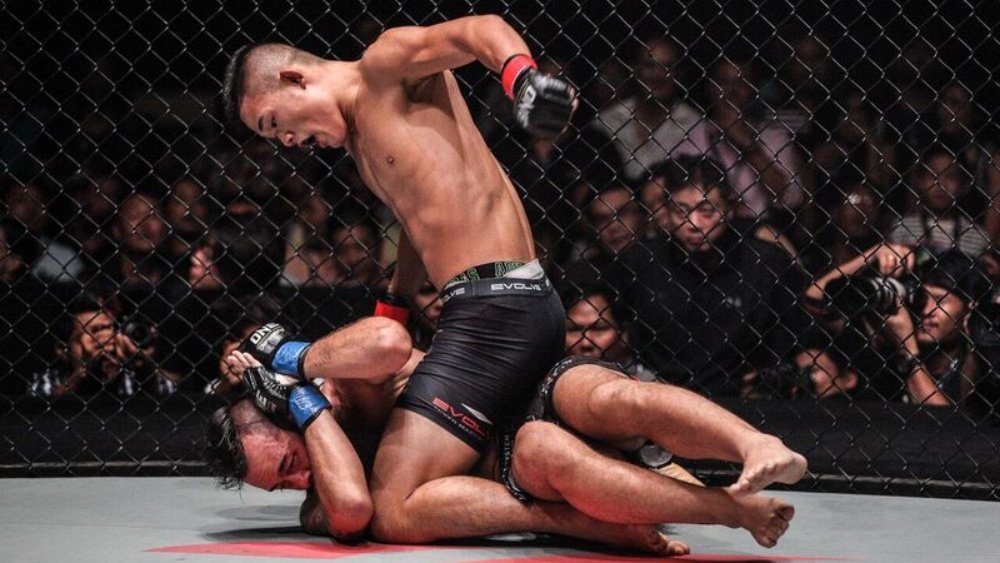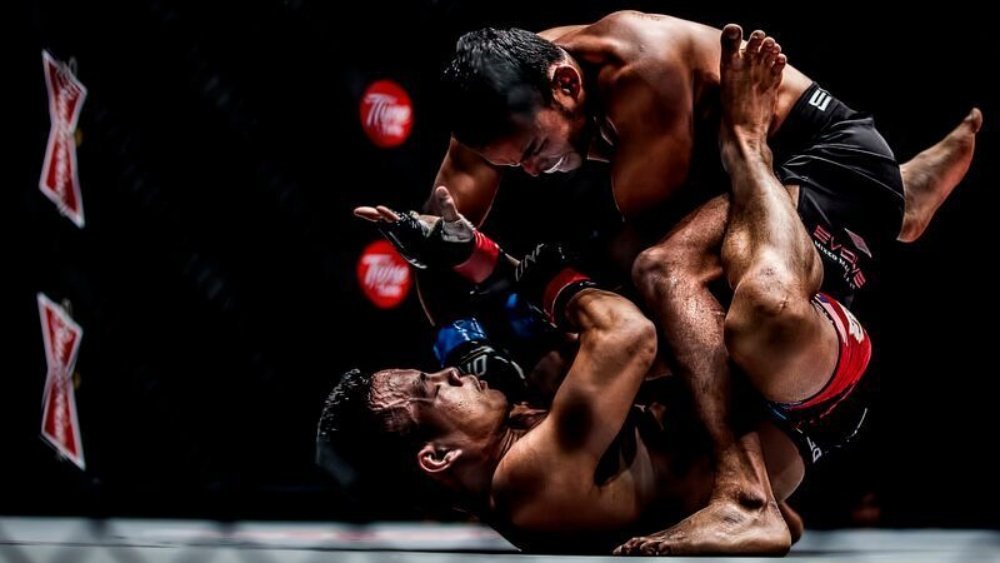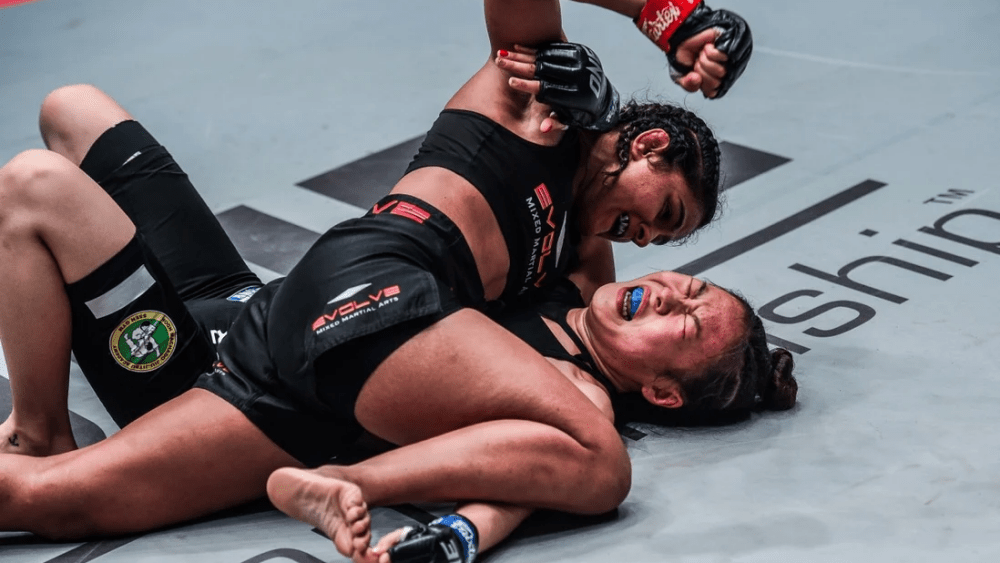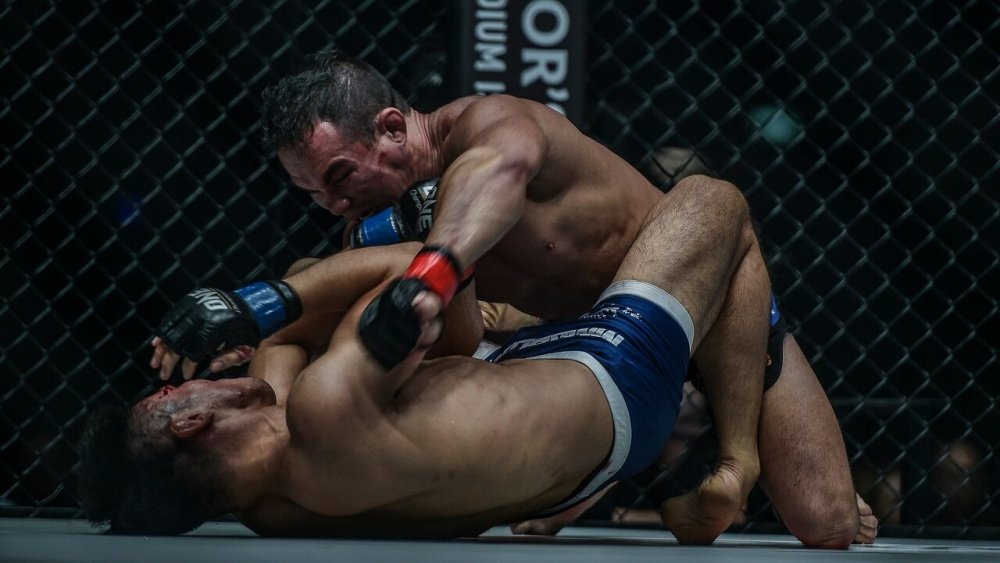In the world of combat sports, few techniques are as effective and devastating as the ground and pound strikes. Whether you are a seasoned fighter or just starting out, learning how to maximize the impact of these powerful strikes can make all the difference in the outcome of a match. By understanding the proper positioning, utilizing proper technique, and maintaining relentless pressure, you can elevate your ground and pound game to a whole new level. In this article, we will explore the key strategies and tips that will help you unleash the full potential of your ground and pound strikes, ensuring that each strike lands with maximum impact.

Understanding Ground and Pound Strikes
What are Ground and Pound Strikes?
Ground and pound strikes are a crucial aspect of mixed martial arts (MMA) and involve striking an opponent while they are on the ground. This technique is commonly employed by fighters who have gained top control and can deliver powerful strikes from a dominant position. Ground and pound strikes can be delivered through punches, elbows, or hammer fists, providing the fighter with an advantage to control the fight and potentially secure a victory.
Importance of Ground and Pound Strikes
Ground and pound strikes play a vital role in a fighter’s arsenal because they allow them to maintain dominance and control over their opponent. By utilizing ground and pound strikes effectively, fighters can wear down their opponents, inflict significant damage, and potentially force a submission or knockout. Additionally, ground and pound strikes can also score points in judging criteria, particularly in MMA competitions. Understanding the techniques and strategies involved in ground and pound strikes is essential for any fighter looking to maximize their impact in the ring.
Techniques for Effective Ground and Pound Strikes
Positioning and Control on the Ground
To effectively execute ground and pound strikes, it is crucial to establish proper positioning and control on the ground. This involves securing top position against your opponent, such as full mount, side control, or back control. Maintaining a stable base and utilizing proper leverage will prevent your opponent from escaping and allow you to generate maximum power in your strikes. By establishing control, you can dictate the pace of the fight and maximize the effectiveness of your ground and pound strikes.
Striking Techniques and Variations
When it comes to ground and pound strikes, fighters have a variety of techniques and strikes at their disposal. Meticulously striking with precision and power is key to maximizing impact. Utilizing punches, elbows, and hammer fists, fighters can target different areas of their opponent’s body, such as the head, body, or even the arms for submission setups. The ability to seamlessly transition between different striking techniques and vary the intensity and speed of strikes will keep opponents off balance and enhance the effectiveness of ground and pound strikes.
Timing and Accuracy
Timing and accuracy are paramount in ground and pound strikes. Recognizing openings and properly timing your strikes can make a significant difference in the outcome of a fight. By studying your opponent’s movements and reactions, you can identify moments where they are vulnerable to strikes. Precise targeting is essential to maximize impact and minimize the risk of missing or invalidating strikes. Consistently landing accurate strikes will take a toll on your opponent, both physically and mentally, providing you with an advantage in the fight.
Developing Power for Ground and Pound Strikes
Strength and Conditioning Training
To maximize the impact of ground and pound strikes, fighters must focus on developing the necessary strength and conditioning. A solid foundation of overall physical fitness is vital for generating power in strikes. Strength training exercises that target the upper body, core, and lower body will enhance a fighter’s ability to deliver forceful strikes from various positions. Additionally, incorporating cardiovascular training, such as running or biking, will improve endurance, allowing fighters to maintain a high tempo while executing ground and pound strikes.
Proper Body Mechanics
Executing ground and pound strikes with proper body mechanics is crucial to generate power. Fighters should focus on maintaining a strong posture, utilizing hip rotation, and engaging the core muscles to deliver forceful strikes. Proper technique ensures that maximum power is transferred from the feet to the striking surface, whether it be punches or elbows. By honing their body mechanics, fighters can optimize the transfer of power and develop the ability to deliver devastating ground and pound strikes.
Utilizing Ground and Pound in MMA
Combining Ground and Pound with Wrestling and Jiu-Jitsu
Success in MMA often lies in seamlessly blending different martial arts disciplines. By combining ground and pound strikes with wrestling and Brazilian Jiu-Jitsu techniques, fighters can maintain control on the ground while simultaneously inflicting damage. Wrestlers can utilize takedowns to secure top position, while Jiu-Jitsu practitioners can leverage their submission skills to create openings for ground and pound strikes. This integration of skills enables fighters to adapt to different situations and maximize the effectiveness of their ground and pound game.
Strategies for Transitioning to Ground and Pound
Transitioning smoothly to the ground and pound phase requires strategic planning and timing. Fighters should look for opportunities to take the fight to the ground, whether by initiating takedowns or capitalizing on their opponent’s mistakes. Once on the ground, maintaining top position and establishing control is crucial. Ground transitions, such as passing guard or securing dominant positions, should be executed with precision and speed to ensure a seamless transition into the ground and pound phase. By employing effective strategies, fighters can set themselves up for success in the ground and pound game.
Creating Openings for Ground and Pound
Creating openings for ground and pound strikes is a skill that fighters must cultivate. By using feints, baits, or intelligently setting up their strikes, fighters can trick their opponents into vulnerabilities. For example, a well-executed fake submission attempt might entice an opponent to expose their arms, thus presenting an opportunity for devastating strikes. Additionally, effective use of strikes on the feet can set up successful takedowns, leading to advantageous ground and pound positions. Employing these strategies will ensure that fighters can maximize the impact of their ground and pound strikes.

Minimizing Risks and Defending Against Ground and Pound
Proper Defense and Counter Techniques
Defending against ground and pound strikes is crucial to minimizing risks and turning the tables on an opponent. Effective defensive strategies involve protecting vulnerable areas, such as the head and body, by utilizing tight defense and positioning. By intelligently blocking strikes and employing defensive grappling techniques, fighters can await the right moment to counterattack or escape from compromising positions. Understanding and implementing proper defensive techniques is essential for fighters who want to avoid unnecessary damage and neutralize the effectiveness of their opponent’s ground and pound strikes.
Protecting Vital Areas
Protecting vital areas during ground and pound exchanges is paramount. Fighters should focus on safeguarding their head, ribs, and other sensitive body parts by using defensive techniques like the cover-up or utilizing their arms to shield against strikes. Maintaining a strong guard and actively defending vulnerable areas by limiting openings will significantly reduce the risk of sustaining serious damage during ground and pound exchanges. By prioritizing the protection of vital areas, fighters can avoid the potential adverse effects of ground and pound strikes.
Finding Escapes and Reversals
Having the ability to escape or reverse unfavorable ground positions is a crucial aspect of defending against ground and pound strikes. By actively working towards scrambles and regaining a favorable position, fighters can reduce the chances of absorbing significant damage. Techniques such as bridging to create space, utilizing shrimping movements, or strategically transitioning to an opponent’s back can lead to successful escapes or reversals. Developing a repertoire of escapes and reversals will empower fighters to navigate challenging ground situations and mitigate the impact of ground and pound strikes.
Training Drills and Exercises for Ground and Pound
Heavy Bag Training for Striking Power
Heavy bag training is an excellent method for developing striking power and technique specific to ground and pound strikes. Utilizing a heavy bag allows fighters to simulate the feeling of striking an opponent on the ground while providing resistance. Practicing a variety of striking techniques, such as punches, elbows, and hammer fists, on the heavy bag helps fighters refine their form, power, and accuracy. Incorporating heavy bag training into regular practice sessions will enhance a fighter’s ability to generate maximum force during ground and pound exchanges.
Partner Drills for Technique and Timing
Partner drills are invaluable for improving technique and timing in ground and pound strikes. By practicing with a training partner, fighters can simulate realistic fight scenarios and develop a better understanding of distance, control, and timing. Practicing striking combinations, transitions, and defensive techniques with a partner allows fighters to refine their skills in a safe and controlled environment. Regular partner drills will enable fighters to hone their technique, enhance their timing, and increase their overall effectiveness in executing ground and pound strikes.
Ground and Pound Specific Conditioning
Conditioning exercises specifically tailored to ground and pound strikes are essential for maximizing performance in the cage. Incorporating exercises such as burpees, medicine ball slams, and kettlebell swings can improve overall explosive power and endurance. Additionally, implementing drills that simulate ground and pound situations, such as rapid-fire striking intervals on a heavy bag or timed rounds of controlled sparring on the ground, will increase a fighter’s conditioning specific to the demands of ground and pound exchanges. Proper conditioning training will ensure that fighters can sustain a high level of performance throughout a fight.

Common Mistakes and How to Avoid Them
Overcommitting to Strikes
One common mistake fighters make when executing ground and pound strikes is overcommitting to strikes, leaving themselves vulnerable to counters or submissions. It is essential to maintain control and accuracy while striking, rather than blindly throwing strikes with reckless abandon. By adopting a patient and calculated approach, fighters can avoid overextending themselves and maintain a dominant position to maximize the impact of their ground and pound strikes.
Neglecting Defense and Control
Neglecting defense and control while executing ground and pound strikes can be detrimental to a fighter’s overall strategy. Focusing solely on striking without paying attention to defensive techniques leaves fighters exposed to submissions, sweeps, or strikes from their opponents. Effective ground and pound strikes go hand in hand with maintaining control and limiting the opponent’s offense. By prioritizing defense and control, fighters can neutralize their opponent’s attacks and minimize the risks associated with ground and pound exchanges.
Lack of Variation in Strikes
Another common mistake fighters make is relying on a limited repertoire of strikes during ground and pound exchanges. Using the same strikes repeatedly makes it easier for opponents to anticipate and defend against them. To maximize the impact of ground and pound strikes, fighters should continuously vary their strikes, angles, and combinations. Incorporating different punches, elbows, and hammer fists, as well as mixing up the tempo and power of strikes, will keep opponents guessing and increase the likelihood of landing devastating blows.
Examining Successful Fighters’ Ground and Pound Strategies
Study of Dominant Ground and Pound Fighters
To gain a deeper understanding of ground and pound strategies, studying successful fighters known for their dominant ground and pound game is essential. Analyzing the techniques and tactics used by fighters like Khabib Nurmagomedov, Georges St-Pierre, or Jon Jones can provide valuable insights into how to maximize the impact of ground and pound strikes. Observing their positioning, striking variations, and control on the ground can help fighters refine their own approach and adapt their strategies to achieve similar success.
Analysis of their Techniques and Tactics
By closely analyzing the techniques and tactics employed by successful ground and pound fighters, fighters can identify key elements that contribute to their effectiveness. Whether it’s the way they establish control, the strikes they throw, or the timing of their attacks, understanding these nuances allows fighters to incorporate them into their own game. By deconstructing and learning from the techniques and tactics of successful fighters, fighters can elevate their own ground and pound game and maximize their impact in the cage.

Legal and Ethical Considerations of Ground and Pound
Regulations in Different Combat Sports
Different combat sports have their own set of regulations regarding ground and pound strikes. In professional MMA, ground and pound strikes are legal, but certain rules and restrictions are in place to protect the fighters. For example, strikes to the back of the head or spine are usually prohibited, and referees closely monitor the safety and well-being of the fighters. Understanding the specific regulations of the combat sport being practiced is crucial to ensure that ground and pound strikes are executed within legal and ethical boundaries.
Avoiding Unnecessary Harm
While ground and pound strikes are an essential part of MMA, it is important for fighters to exercise caution and prioritize the well-being of their opponents. Striking with excessive force or ill intent can lead to unnecessary harm and potential long-term damage to an opponent. Ground and pound strikes should be executed with skill and control, inflicting enough damage to gain an advantage without causing unnecessary harm. Maintaining good sportsmanship and respecting the safety of opponents are critical factors when utilizing ground and pound strikes.
Conclusion
In conclusion, maximizing the impact of ground and pound strikes requires a comprehensive understanding of the techniques, strategies, and training necessary to excel in this aspect of MMA. Establishing proper positioning and control on the ground, mastering striking techniques and variations, and developing power through strength training and proper body mechanics are key foundations for effective ground and pound strikes. By seamlessly blending ground and pound with wrestling and Jiu-Jitsu techniques, creating openings, and minimizing risks through proper defense, fighters can optimize the effectiveness of their ground and pound game. Through dedicated training drills and exercises, avoiding common mistakes, studying successful fighters, and considering legal and ethical aspects, fighters can become proficient in ground and pound strikes and maximize their impact in the cage. Ultimately, with proper training, technique, and a strong understanding of ground and pound strategies, fighters can capitalize on this powerful technique to gain a decisive advantage and achieve success in MMA.

